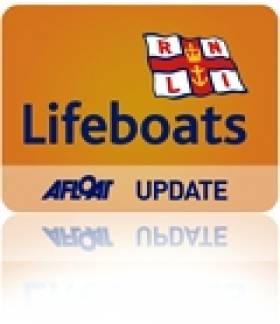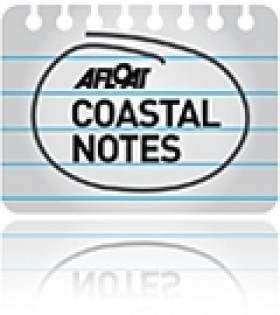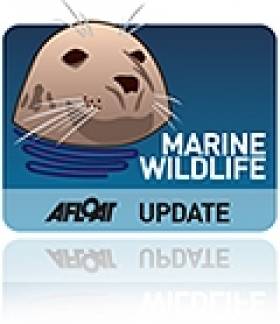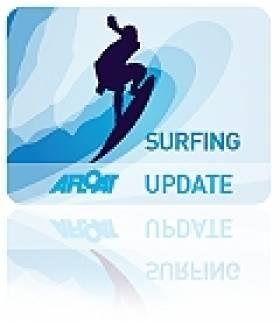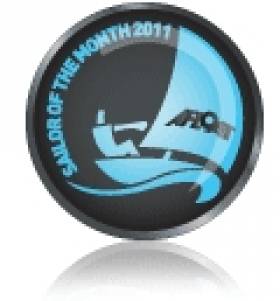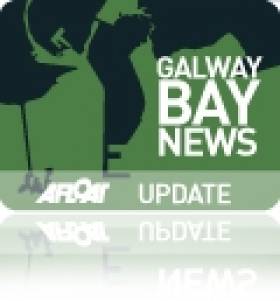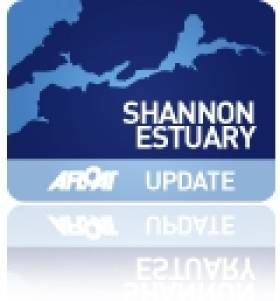Displaying items by tag: Clare
Body Recovered After Sailing Dinghy Overturns Off West Cork
#MISSING BOATS - The Irish Times reports that the body of a man in his 60s has been recovered from the sea off West Cork in the early hours of this morning.
The body, believed to be that of John O'Leary from Allihies, was found as part of a major search operation after the sailing dinghy carrying the man and his 18-year-old son Christopher overturned off the Beara Peninsula yesterday evening.
According to RTÉ News, the two spent four hours clinging to the boat before swimming towards the shore. Christopher reached land almost 1km away to raise the alarm but his father went missing in the interim.
The boat was discovered around 8pm with no sign of John O'Leary in the vicinity, according to the Irish Independent.
The Irish Coast Guard at Valentia co-ordinated the search operation from 9pm last night, and volunteers with the Castletownbere RNLI lifeboat recovered a body off Cod's Head around 1.30am. A postmortem will be carried out later today at Cork University Hospital.
Meanwhile, the search continues for a missing fishing boat off Co Clare.
The Lady Eileen, with two crew on board, was due to return to Quilty yesterday evening.
Coastguard search teams discovered debris and diesel in the water near Spanish Point before the search was postponed due to low light.
Garda divers have been asked to assist in the search and are due in the area around midday.
#beach – Clare County Council, on the advice of the Health Service Executive (HSE), has today (Saturday, 21 July 2012) lifted restrictions relating to public bathing at Lahinch, Kilkee and Spanish Point beaches.
The Council confirmed that the preliminary results of water samples taken from the three bathing areas yesterday (Friday) have shown a dramatic reduction of levels of bacteria in the water. The Council and HSE said an improvement in weather conditions in recent days has been the main contributory factor to the positive results.
As previously reported on Afloat.ie the prohibition on bathing at the three locations was put in place on Friday after the results of routine tests on water samples at the three beaches showed up elevated levels of bacteria.
According to Anne Haugh, Director of Services, Clare County Council: "On the advice of the HSE and following analysis of water samples, the Council is delighted to be able to announce the lifting of all restrictions relating to bathing at Lahinch, Kilkee and Spanish Point. Public notices indicating that swimming and surfing at the three locations are no longer prohibited are being erected this afternoon, while the Blue Flag at Lahinch and Kilkee beaches have been restored having been temporarily withdrawn on Friday. Lifeguards at each of the three bathing areas also have been instructed to remove all red flags which had indicated that bathing was prohibited."
Liam Griffin, Water Safety Officer, Clare County Council added: "Clare County Council would like to thank the public for their understanding and cooperation over the past 24 hours. The local authority also acknowledges the valuable role played by the media in promoting the public health notices."
Clare Beach 'Narwhal' Was No Such Beast, Experts Confirm
#MARINE WILDLIFE - The mystery creature washed up on a Co Clare beach last month has been confirmed to be a long-finned pilot whale, and not a narwhal as had been alleged.
As previously reported on Afloat.ie, the situation was a source of puzzlement for the Irish Whale and Dolphin Group (IWDG) as the carcass was removed from Liscannor beach before their scientists could examine the remains.
Experts had been hoping to verify an eyewitness report that the carcass was indeed that of a narwhal, an Arctic cetacean renowned for its unicorn-like tusk. It would have been the first recorded sighting of a narwhal in Irish waters.
But RTÉ News reports that images sent to the IWDG confirm at last the identity of the animal as a long-finned pilot whale.
It marks the fourth reported stranding of a pilot whale in Co Clare and the 16th around Ireland this year alone.
The IWDG added that it was "always sceptical that the whale was a narwhal", and said Clare County Council did not deserve the criticism it received for removing the carcass over public health concerns.
Clare Will Be Rocking for Surf & Music Festival
Thousands of visitors are expected in the west Clare town of Miltown Malbay for the Cold Pro surf and music festival on the June bank holiday weekend.
The Irish Examiner reports that Imelda May, Peter Hook (New Order) and Jamie xx are among the acts signed up for the two-day event, which will feature live music across three stages - as well as an invitational surfing tournament with €20,000 in prize money up for grabs.
The Irish Examiner has more on the story HERE.
Tipperary Boat Dealer 'Closes the Doors'
Tipperary Boat dealer Marine Action Boats Ltd, based on the river Shannon at Birdhill has 'ceased operations' according to an announcement on the firm's website. The Sports boat dealership 'closed its doors' and ceased trading on December 31 2010, according to managing director, Tadhg Foley. Marine Action Boats were sole importers of Crownline Sports Cruisers for Ireland, according to the website. The sports boat section of the marine trade market has been one of the hardest hit by the economic downturn. The firm also handled brokerage, repairs and boat maintenance. The full text of the announcement is as follows:
"Despite great efforts from ourselves and our loyal team, we would like to announce that we have ceased operations at Marine Action Boats, and we are no longer trading. We would also like to thank all our customers and our suppliers for their support over the past decade".
Cruise from Kinvara to Tahiti Wins Sailor of the Month Award
Recognised by the senior offshore sailing organisation, the Irish Cruising Club, with the award of the historic Faulkner Cup, the Quinlan's achievement is further enhanced by the fact that, in their determination to acquire a boat suitable for long distance voyaging, they built their steel-constructed 40ft cutter Pylades themselves, launching in 1997.

They have brought a lively and enquiring eye to the complex project, something which reflects Fergus's qualifications as an architect. As he has drily observed himself, there isn't a lot of work around for architects in Ireland at the moment, so everything clicked with the boat sea-tested and ready to go off on this sail of a lifetime.
Having left Kinvara in June 2009, their longterm plan is a global circumnavigation, returning to Galway Bay in August 2012. Quite what Ireland will be like by then is anybody's guess. But as it is, the crew of Pylades have enough to be getting on with in dealing with the vagaries of the open ocean, and the volatile political situation in some of the areas where ocean voyagers go. For armchair sailors at home, their thoughtful and entertaining reports on their experiences make them worthy "Sailors of the Month".
Radio Documentaries on Irish Surfing
Two new radio documentaries on surfing in the west of Ireland are now available for all to listen online.
Originally broadcast on the Kilkee-based community station Raidió Corca Baiscinn at the end of last year, Conan Brophy's two-part series provides a snapshot of the surf scene in Co Clare, as well as the growing phenomenon of big wave surfing.
Both documentaries are available for listening HERE.
Buzzing Across Galway Bay?
A new ferry route has been proposed for Galway Bay, between Ballyvaghan at the north end of the Burren in County Clare, and Galway City in the famous Bay's northeast corner writes WM Nixon. The Clare village is at the head of its own bay within the shelter of Black Head, Galway Bay's southwest headland. A pretty place, Ballyvaghan is heavily reliant on providing hospitality for visitors drawn to the unique attractions of the Burren region, but the locals feel that the traffic holdups in the 50 km drive around from Galway can act as a disincentive for tourists.
Then too, the proposed 12-seater fast ferry – which could make the eleven mile crossing in 30 minutes or less – would be an attraction in itself. Having savoured the convenient waterfront charms of Galway City – from which they can already take popular boat trips on Lough Corrib – it's easy to believe that visitors would enjoy a quick sea voyage to somewhere entirely different.
Galway Bay Hop spokeswoman Gwen Ryan of Ballyvaghan claims that the ferry would also be useful for commuters travelling daily to work in the thriving commercial hub around the city. Then too, the fact that the ferry is of a manageable size means that it could also be used for group hire to visit many of the other small tidal ports around Galway Bay such as Kinvara and Barna, and perhaps even take in the legendary oyster pub Moran's of the Weir near Kilcolgan.
The idea first emerged from a Community Think-in at Ballyvaghan in the Spring of 2010, and if a feasibility study gives the right signals, the service could be operational by next year.
Message in a Bottle Washes Ashore at Loop Head
When Adam Flannery joined his family on holiday to Kilbaha, Co Clare this summer, little did he know that he would be assisting in a school science project that began some 6,000km away.
Yet that's exactly what happened when the 17-year-old picked up a message in a bottle on the beach at the Loop Head peninsula village.
"It was washed up on the shore, over the wall from Keatings Pub,” Adam's father Steve Flannery told the Clare Champion. “It was just an ordinary green wine bottle with a sealed rubber cork on it."
But the bottle was part of a study of ocean currents conducted by a science class at Melbourne High School, on the east coast of Florida, USA.
Adam followed the instructions inside to contact the school and give them the good news. Melbourne High science teacher Ethan Hall confirmed that the find was the first to cross the Atlantic in the four years he's conducted the project.
The bottle was thrown into the water close to the Gulf Stream in late April 2009 before beginning an incredible 16-month journey to west Clare at the mouth of the Shannon. It's currenty with the Flannery family at their home in Athlone, but they plan to return it to Kilbaha next summer.


























